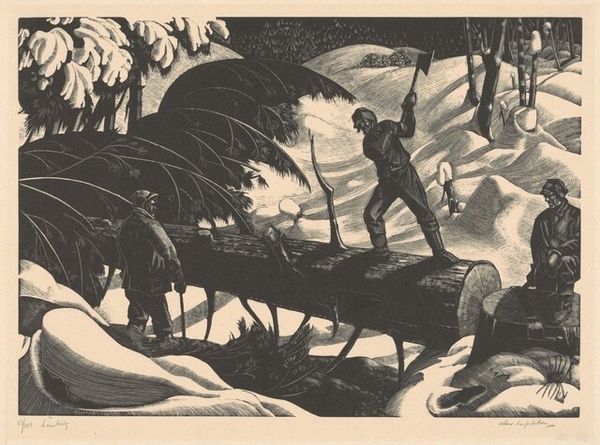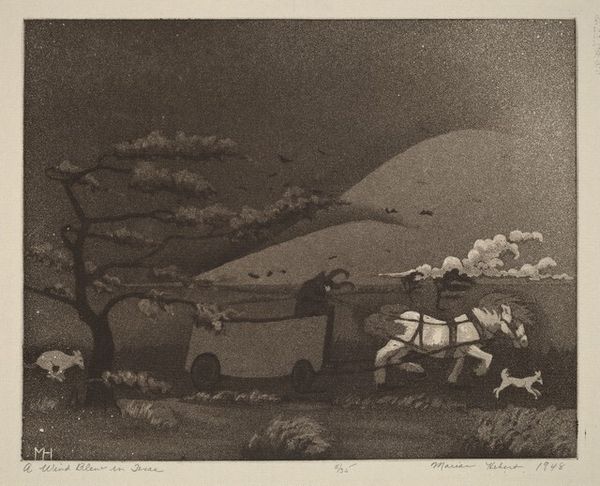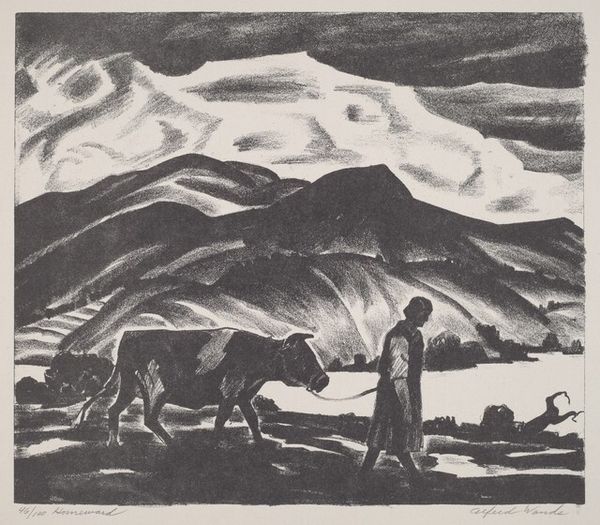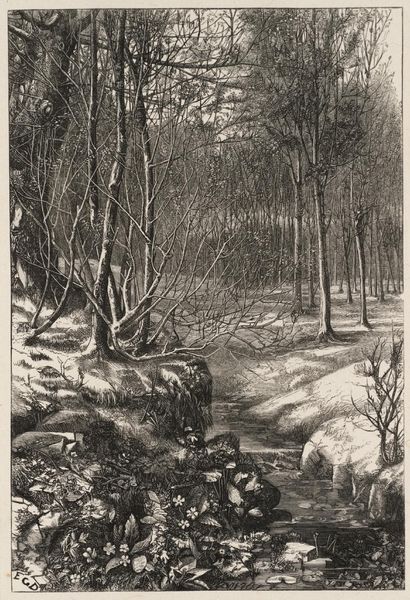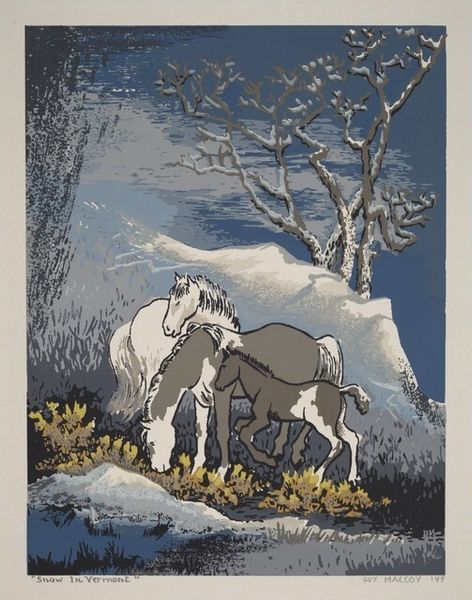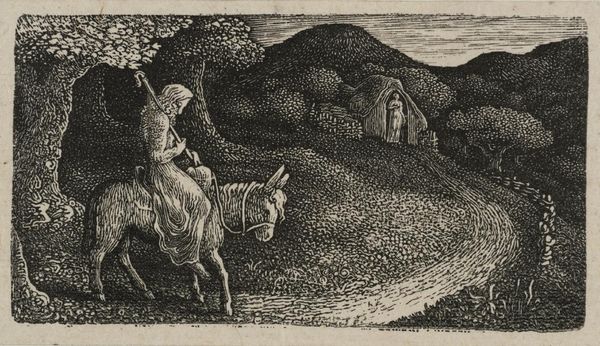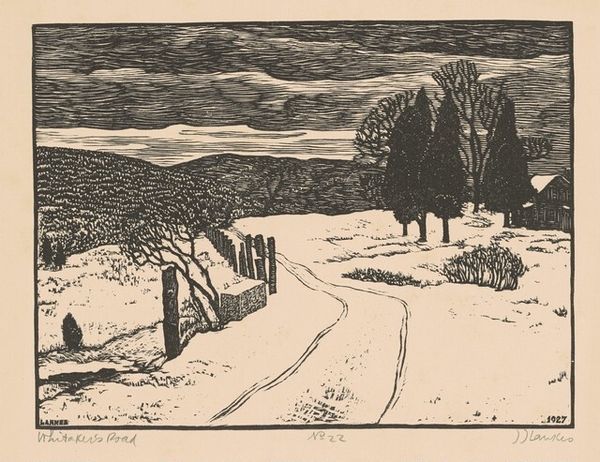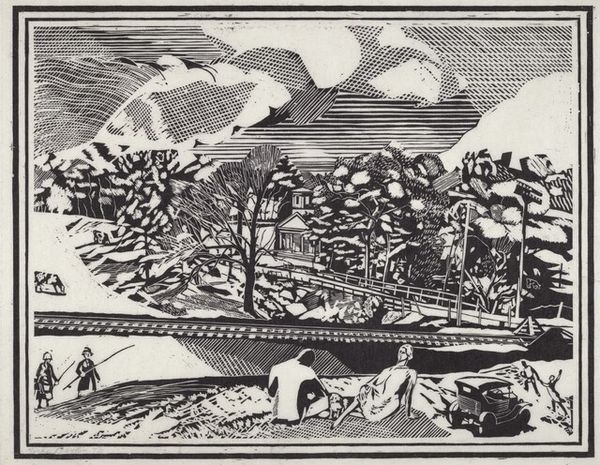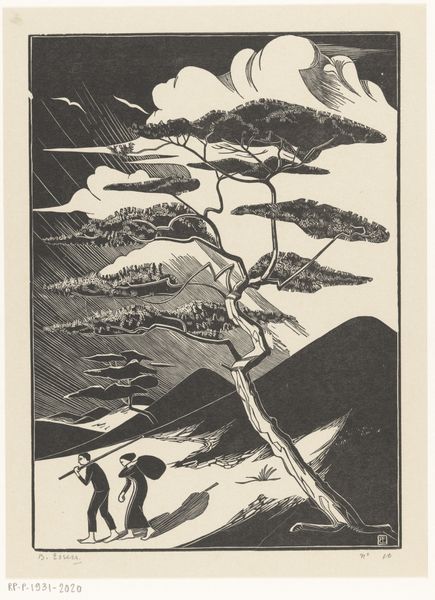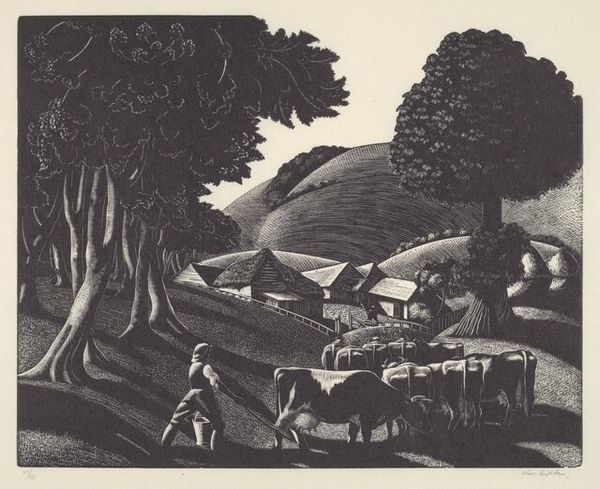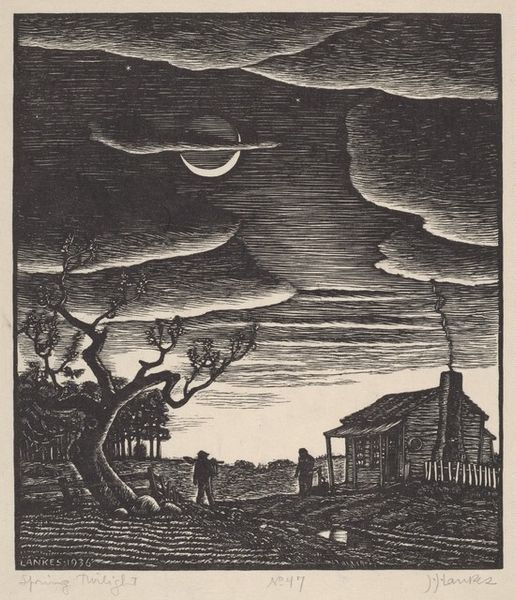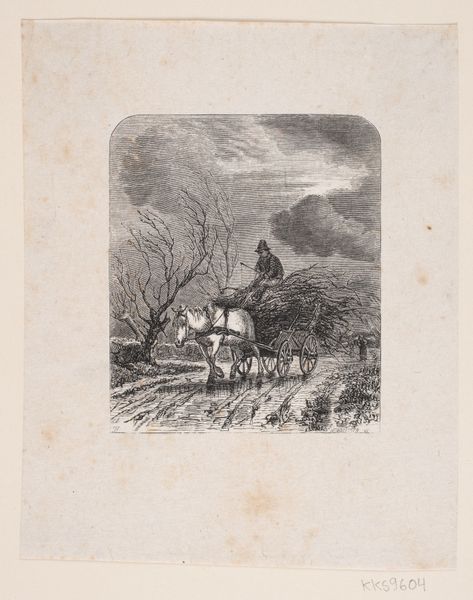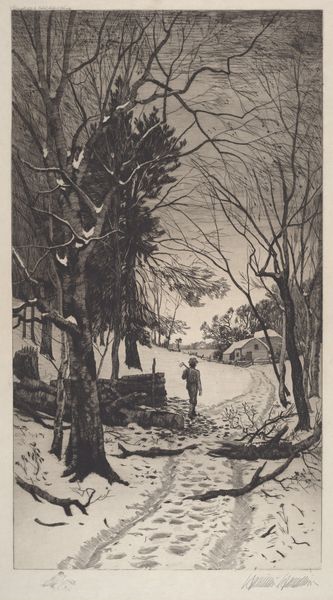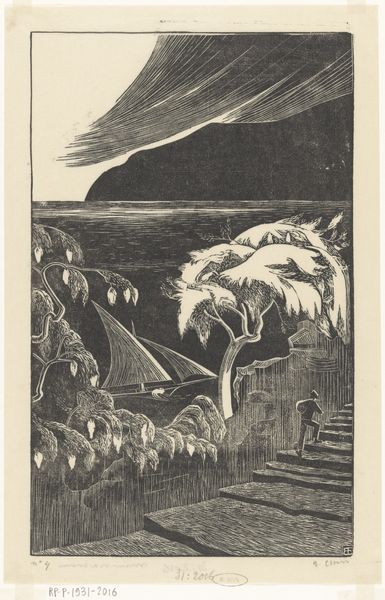
print, woodcut
#
narrative-art
# print
#
landscape
#
winter
#
woodcut
Dimensions: image: 30.48 × 25.56 cm (12 × 10 1/16 in.) sheet: 40.48 × 32.39 cm (15 15/16 × 12 3/4 in.)
Copyright: National Gallery of Art: CC0 1.0
Curator: Looking at this woodcut by J.J. Lankes, titled "New Year's Day" from 1934, I immediately feel the crisp stillness of a winter morning. The textures carved into the wood create such a palpable sense of cold and quiet. Editor: It's true, the formal elements absolutely evoke the sense of a quiet winter journey. And Lankes made this work during the Great Depression; understanding that historical context is critical. These images of rural life offered an escape from the harsh realities of the time, presenting an idealized vision of simpler days. Curator: I agree that knowing the period illuminates it further. However, let’s delve deeper into the composition itself. Note the strategic use of light and shadow—the stark contrast emphasizes the bare trees and snowy ground. The perspective guides your eye towards the distant hills, creating a sense of depth. The deliberate cutting away, the negative space if you will, is so effective here. Editor: Absolutely, but those choices, I believe, reflected the values being promoted. Think of the Farm Security Administration photographs from that era, promoting resilience. The image is promoting not just the aesthetics, but the idea of American grit. Note how the image reinforces this social role through subject matter. Curator: Interesting point. Perhaps we can consider then how the lines aren't just aesthetic choices, but representational; short, deliberate, to capture the weight of snow versus longer cuts depicting flowing hills. It seems that semiotically, the very structure mimics themes within. Editor: I think you've zeroed in on it: how form and message became one for many artists. The image romanticized what the administration may have promoted, a self-sufficient and noble American spirit at one with the land. Curator: So, the historical pressures of the time shaped artistic intent, but the print stands on its own for its striking visuals, no? It remains visually arresting whether one is familiar with 1930s America or not. Editor: Undeniably, but understanding how artistic intention evolved gives this rural tableau depth. Looking closely reveals so much about the relationship between visual representation and the values it can come to express.
Comments
No comments
Be the first to comment and join the conversation on the ultimate creative platform.
